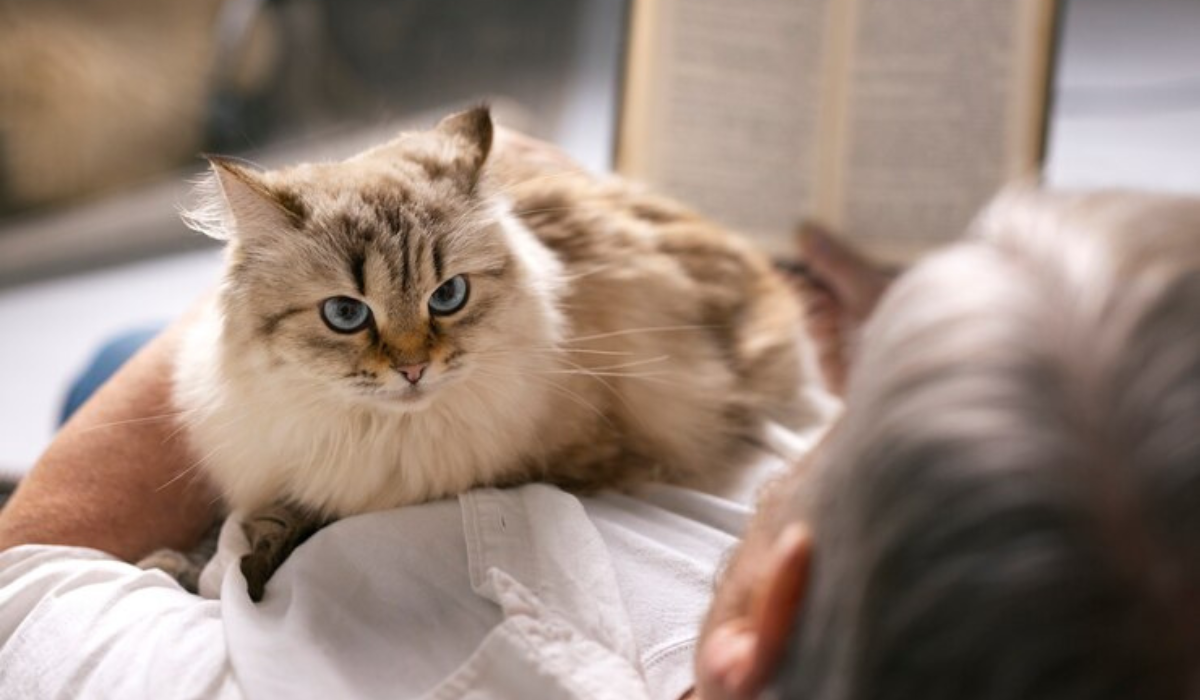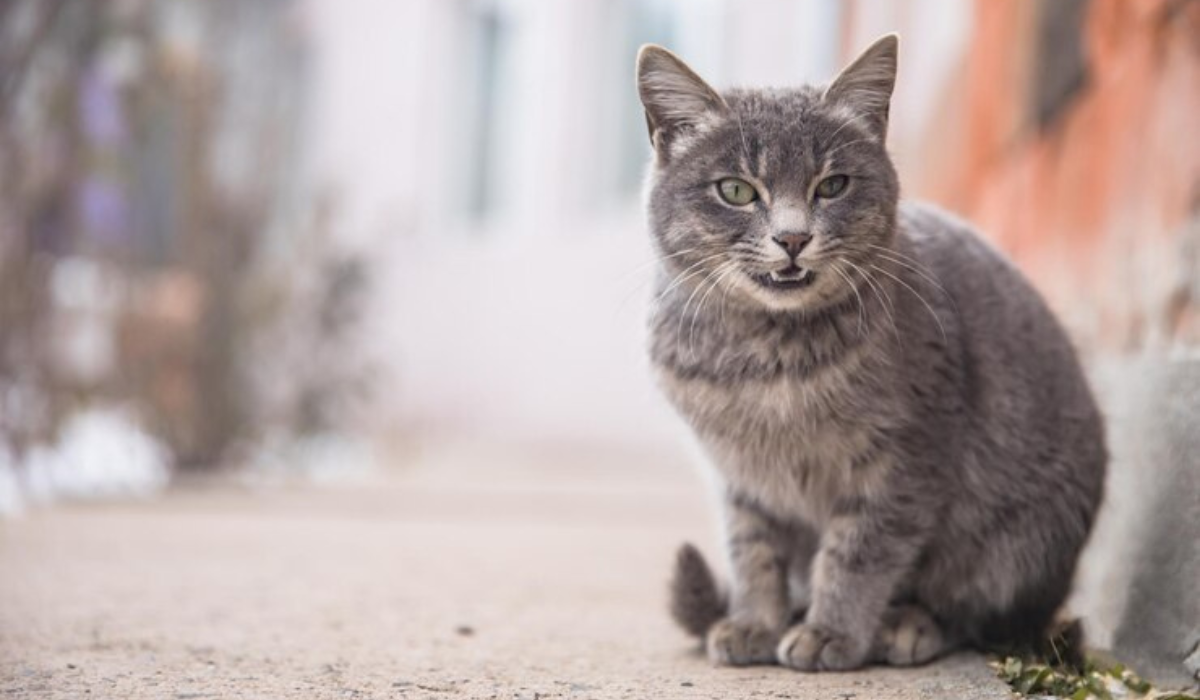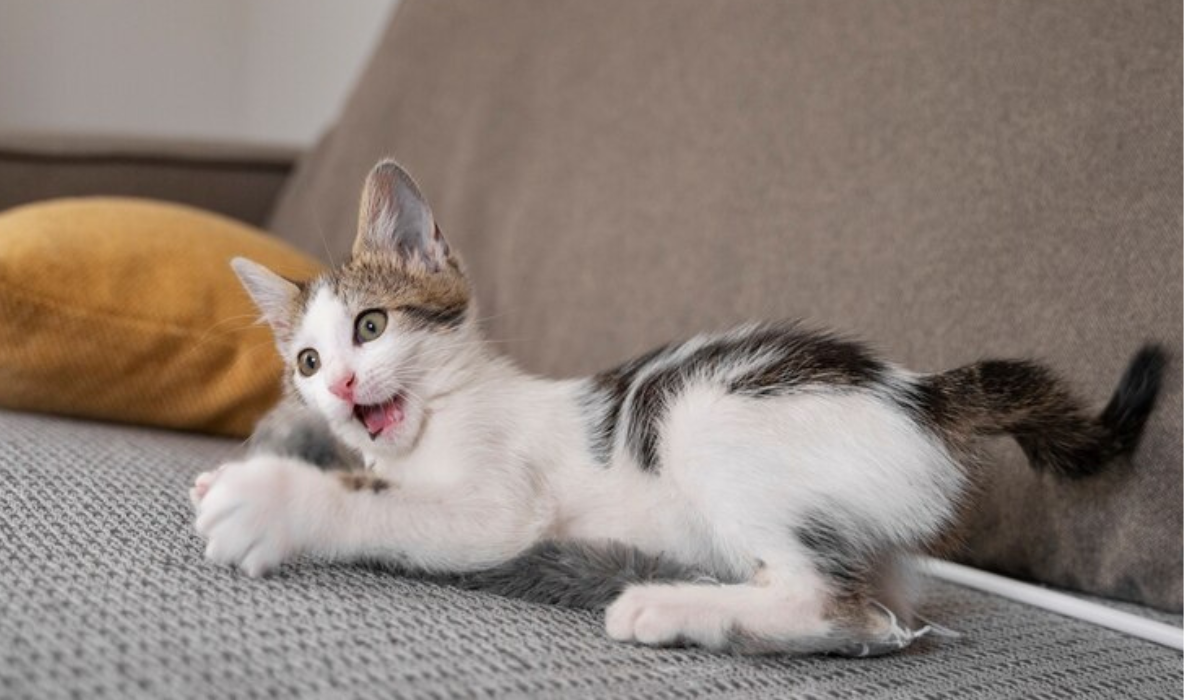There is a silent language that cats use to communicate, which consists of body signals, vocalizations, and smell cues. Knowing the nuances of this feline language can help you better understand your furry companion’s needs and emotions as a cat owner.
1. chitchat:
-
It is accompanied by a rapid movement of the lower jaw and a unique throat noise.
-
When stalking or before attacking a prey, it expresses excitement.
2.The chirping sounds like:
-
A high-pitched sound resembling a surprised greeting or a mixture of squeaking and chirping.
-
This means “Hi” or “What about me?” and indicates surprise or desire for attention.
3. there is groaning:
-
As a warning, a low guttural vocalization is emitted.
-
Anger or aggression often followed by biting or clawing. A form of “kitty cussing.”
4. hissing sounds like:
-
Disapproval or dissatisfaction expressed through a sharp, sustained “S” sound.
-
Useful for warding off threats, signaling displeasure, and showing fear. It is often preceded by growling or attacking.
5. A purring sound:
-
Throaty, vibrant noise varying in tone and volume.
-
Associated with happiness and contentment. As a form of self-comfort, some cats purr when sick or scared.
6. meows:
-
A variety of meows are unique to each cat.
-
From greetings to requests, this is generally a call for attention. Meows with high pitches may indicate pain or distress.
7.Cat Messages: Understanding What Your Cat Is Saying:
-
There are different vocalizations cats use to convey their emotions and needs.
-
For a better understanding of what your cat is saying, pay attention to the context and frequency of its sounds.
-
In stressful situations, cats may purr for self-comfort, depending on their emotional state.
-
In addition to meows, growls, and hisses, cats can also express fear and displeasure with their sounds.
-
Observing changes in your cat’s behavior and correlating them with specific vocalizations is key to decoding their language.
For cat owners, here are some key takeaways:
-
Every vocalization of a cat serves a specific purpose.
-
Better care for your cat is possible when you understand its sounds.
-
Observe your cat’s behavior regularly and respond appropriately to their vocal cues.
-
There is a difference between meanings of the same sound depending on context.
-
Understanding your cat’s communication will help you maintain a harmonious relationship with them.
How Cats Talk: Facial Expressions, Ears, and Tail Positions:
1.Using Meows, Purrs, and More:
-
Various vocalizations (meows, purrs, hisses, growls) are used by cats to express their emotions.
-
Meowing at humans may be a manipulative behavior used by domesticated cats.
-
In order to interpret each vocalization’s meaning, it is crucial to understand its context.
2. An ear-to-ear conversation:
-
Forward-facing ears communicate emotion and intent.
-
Movement of the ear backwards and sideways indicates arousal.
-
Cats with backward ears that hiss or swipe indicate that they feel threatened or displeased.
3. What’s on your mind:
-
The position of the eyelids and the dilation of the pupil are important components of cat communication.
-
Fear or interest can cause sudden pupil dilation.
-
The eyes of a person who is wide-open can indicate trust, while the eyes of a person who is narrow-eyed can indicate fear.
-
Blinking slowly can indicate affection and trust.
4. Tail Talk:
-
A cat’s tail communicates interest, affection, and arousal.
-
The height and motion of the tail convey specific meanings.
-
A raised tail indicates a welcoming invitation, while a flailing tail signals that distance is required.
-
A tucked tail indicates fear, and a bristled tail indicates defensiveness.
5. The fur talk:
-
A cat’s fur reflects its emotional and physical health.
-
Illness may be indicated by unkempt fur, especially if it is accompanied by lethargy or vomiting.
-
When the coat suddenly fluffs up and the tail appears “bottle brushed,” there is a sign of fear or aggression and caution should be exercised.
6. Scent and smell:
-
Urine and feces marking, bunting (body rubbing), and clawing are all scent cues cats use for communication.
-
It is through scent messages that cats establish territorial boundaries and communicate with one another.
7. The body language:
-
The cat’s body posture indicates whether it is confident, afraid, or submitting to its owner.
-
It is essential to observe the eyes, ears, tail, fur, and vocalizations together when reading body language.
-
In a relaxed and happy cat, the ears point forward, the eyes are relaxed, and the whiskers are facing forward.
It requires attentive observation and context recognition to understand your cat’s silent language. It is possible to build a stronger bond with your cat if you master these feline communication cues and respond effectively to their emotional and needs.









